PAGE 1 — Aceraceae • Anacardiaceae • Aquifolieaceae • Arecaceae • Asteraceae •
Berberidaceae • Caprifoliaceae • Clusiaceae • Cornaceae • Cupressaceae • Ebenaceae • Euphorbiaceae • Fabaceae • Fagaceae • Hamamelidaceae •
Hippocastaneaceae • Juglandaceae
PAGE 2 — Lauraceae • Moraceae • Myricaceae • Oleaceae • Platanaceae • Rosaceae • Rubiaceae •
Salicaceae • Styracaceae • Ulmaceae • Verbenaceae
Family Lauraceae
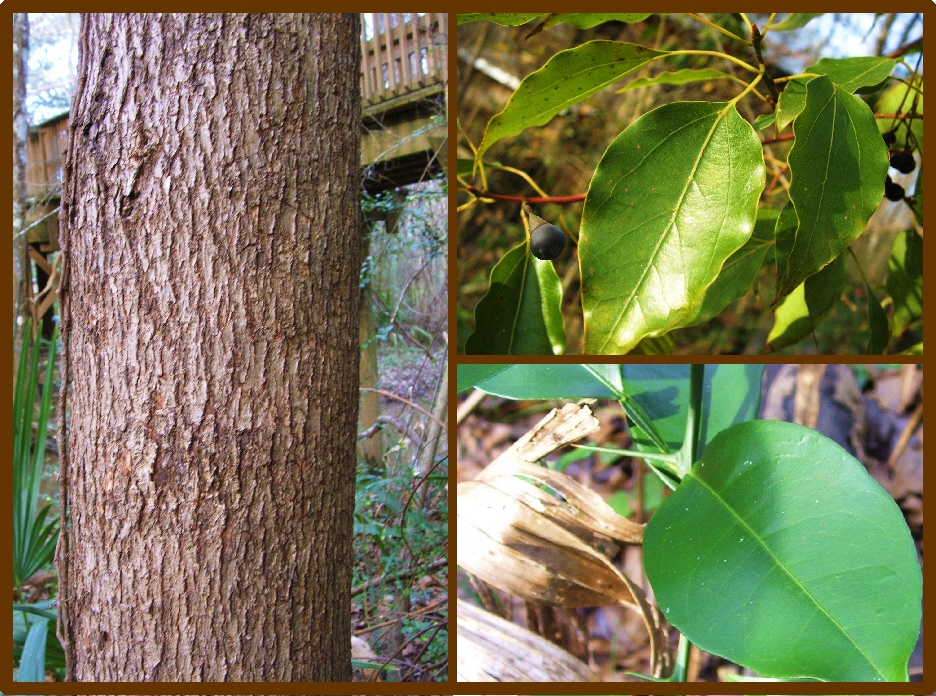 |
Camphor tree - Cinnamomum camphora; bird-introduced exotic
An exotic species which was once planted as an ornamental throughout southern Louisiana and the entire Gulf Rim. Those few specimens that remain
here at the park were doubtlessly distributed via native songbirds such as American Robins, Cedar Waxwings, or Brown Thrashers - all of whom love
the dark, shiny fruits. Look for the glossy, evergreen leaves of the camphor tree down where the escarpment meets the floodplain forest. |
| |
Sassafras - Sassafras albidum
Used for gumbo file' (crushed leaves) as well as a root tea. Moreover, birds especially appreciate the fruits which the female trees of this
species produce - so much so, that is difficult to find sassafras fruits after August. Here at Acadiana Park, sassafras is much restricted to the
well-drained woodland margins that border the prairie terrace. |
Family Moraceae
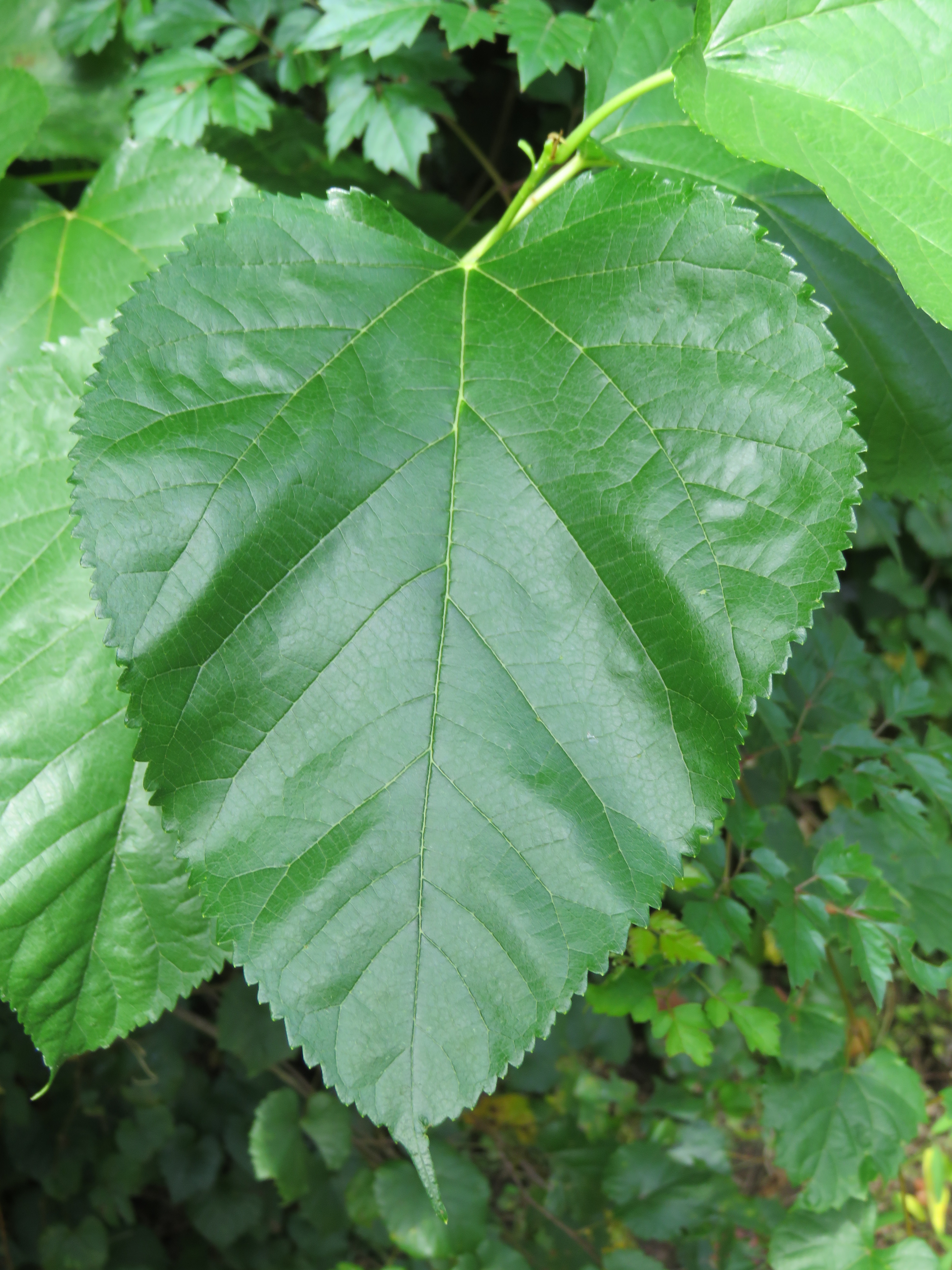 |
Red mulberry - Morus rubra
Very uncommon here - a situation which we find quite strange, since this species is rather widely distributed throughout southern Louisiana,
particularly within bottomland hardwood habitats. The few specimens that we've located at Acadiana Park do not seem to produce female
flowers/fruits. Red mulberry is an exceedingly important food source for nesting Summer Tanagers and American Robins, as well as a large segment
of neotropical migrants such as the thrushes, vireos, orioles, tanagers, and others. |
Family Myricaceae
 |
Southern wax-myrtle - Myrica cerifera
Commonly present along the woodland margins of the prairie terrace. Its aromatic, evergreen foliage harbors local kinglets, gnatcatchers, and
warblers during the winter months. Its small, waxy fruits are also utilized by Yellow-rumped Warblers. |
Family Oleaceae
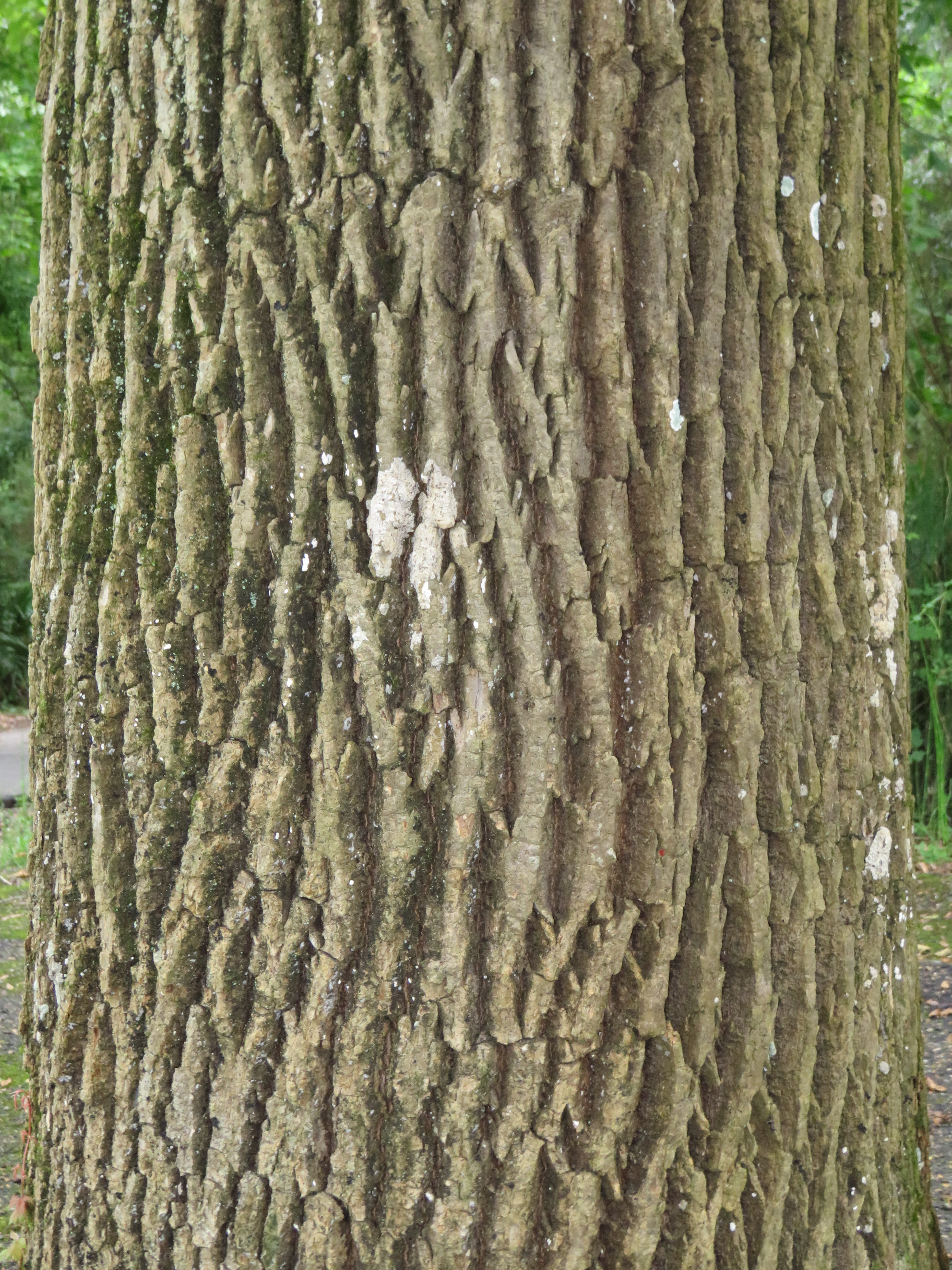
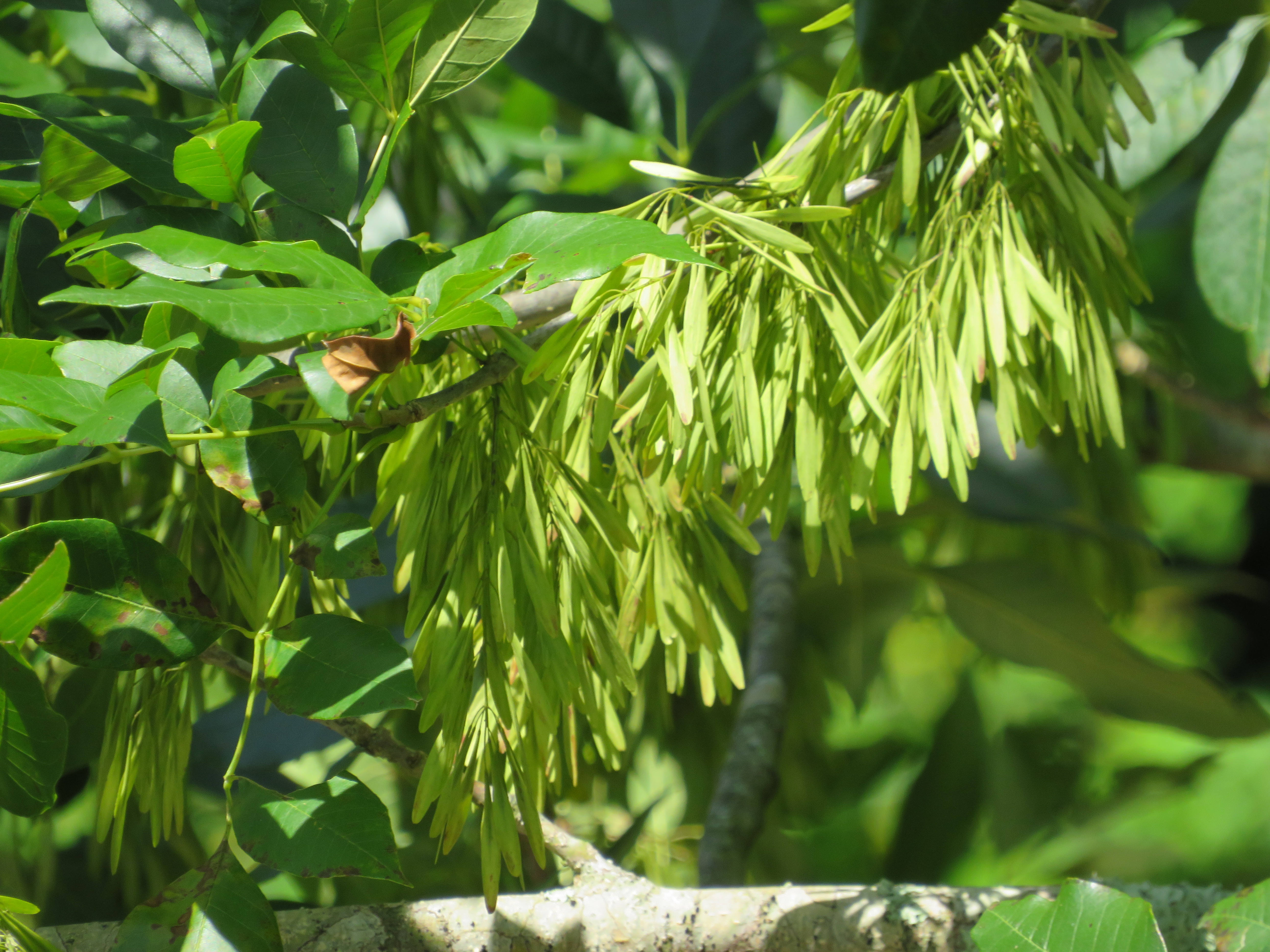
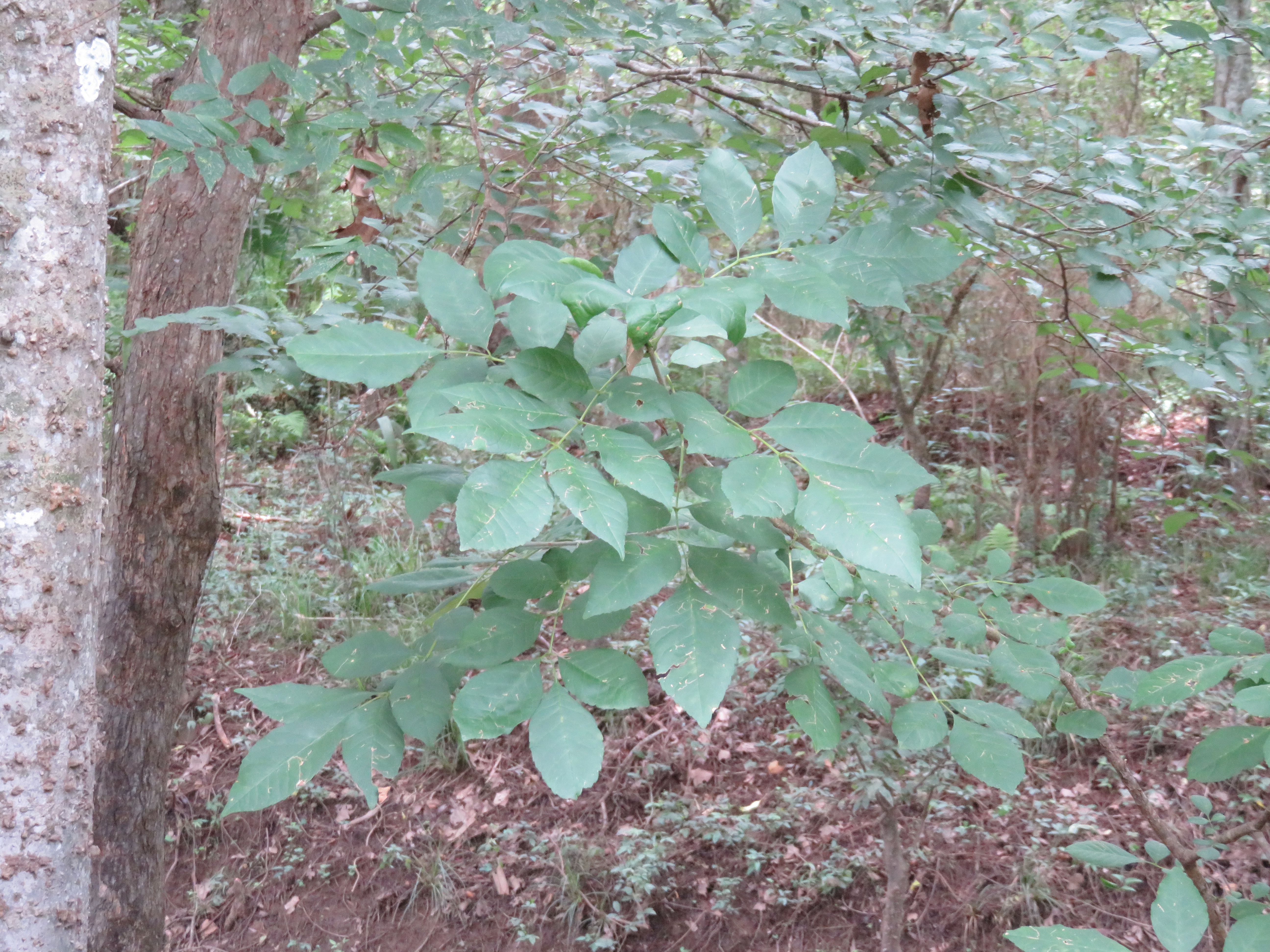 |
Green ash - Fraxinus pensylvanica
A fairly common floodplain forest climax species. Its pinnately compound leaves often result in tree-watchers confusing it for a sweet pecan tree.
Unlike the sweet pecan, though, green ash possesses densely furrowed bark (vs. loose, scaly plates on the pecan). The "keys"
(paddle-shaped fruits) of female green ash trees are eaten by Cardinals, House Finches, and others. |
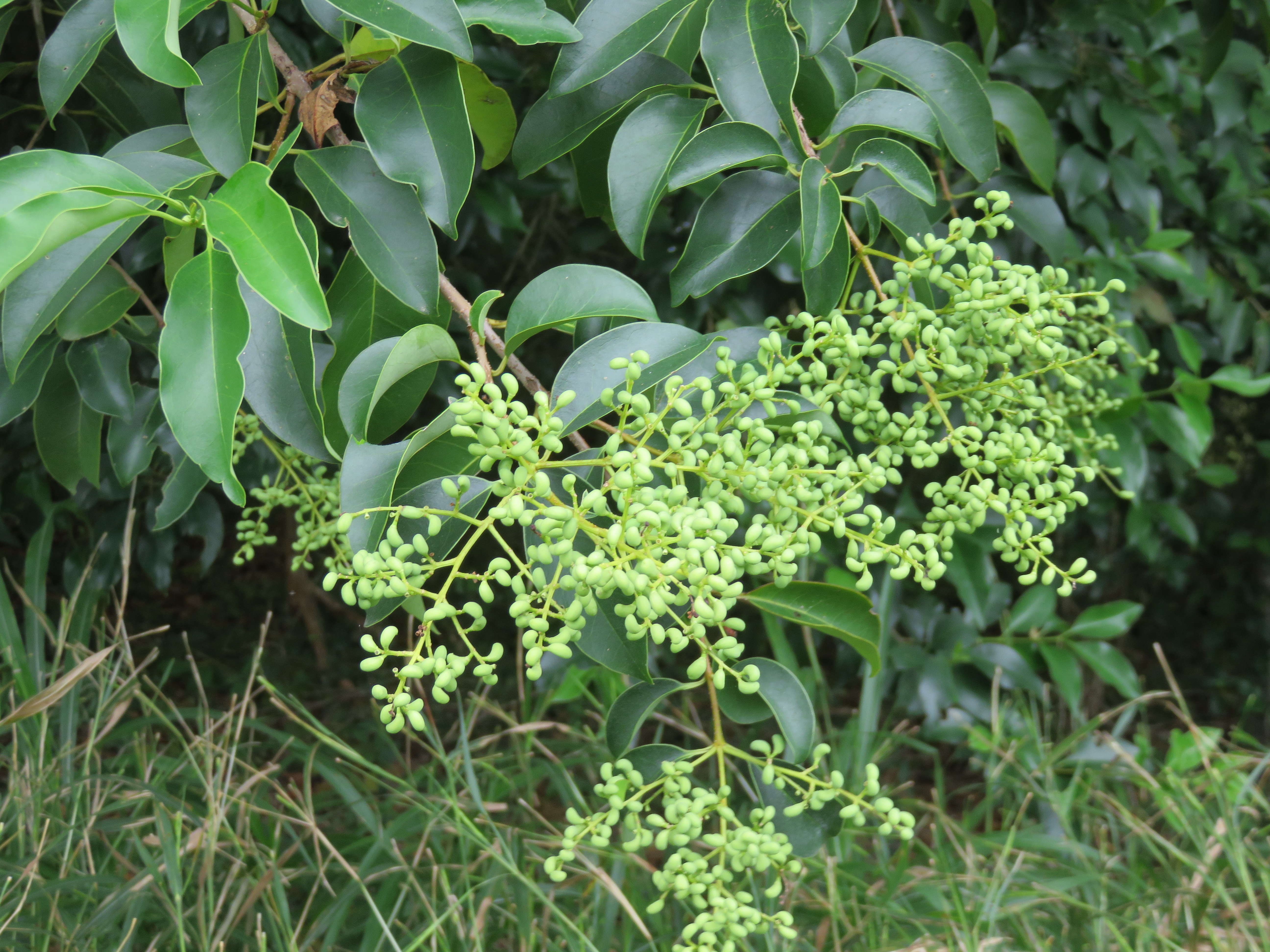
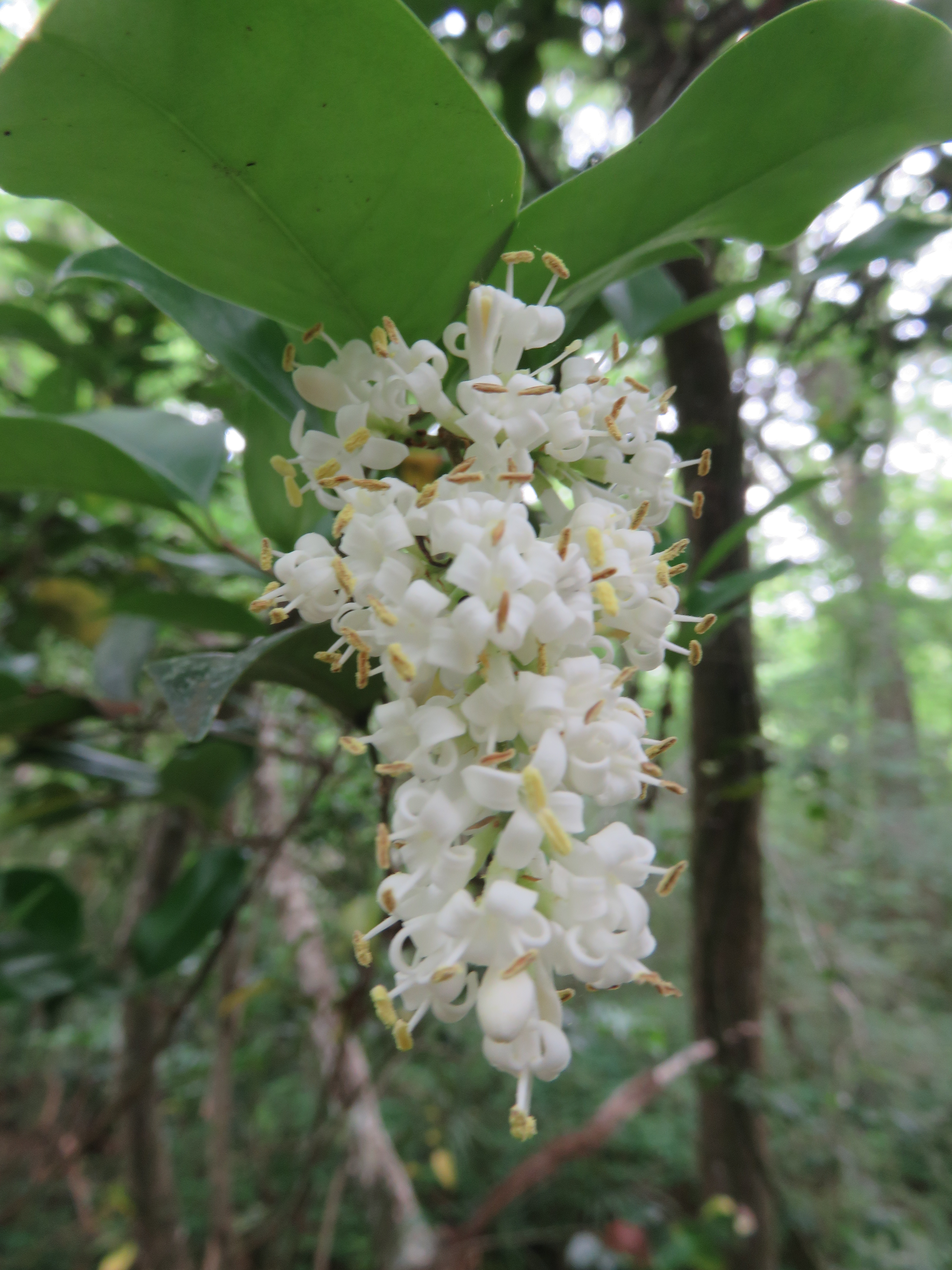
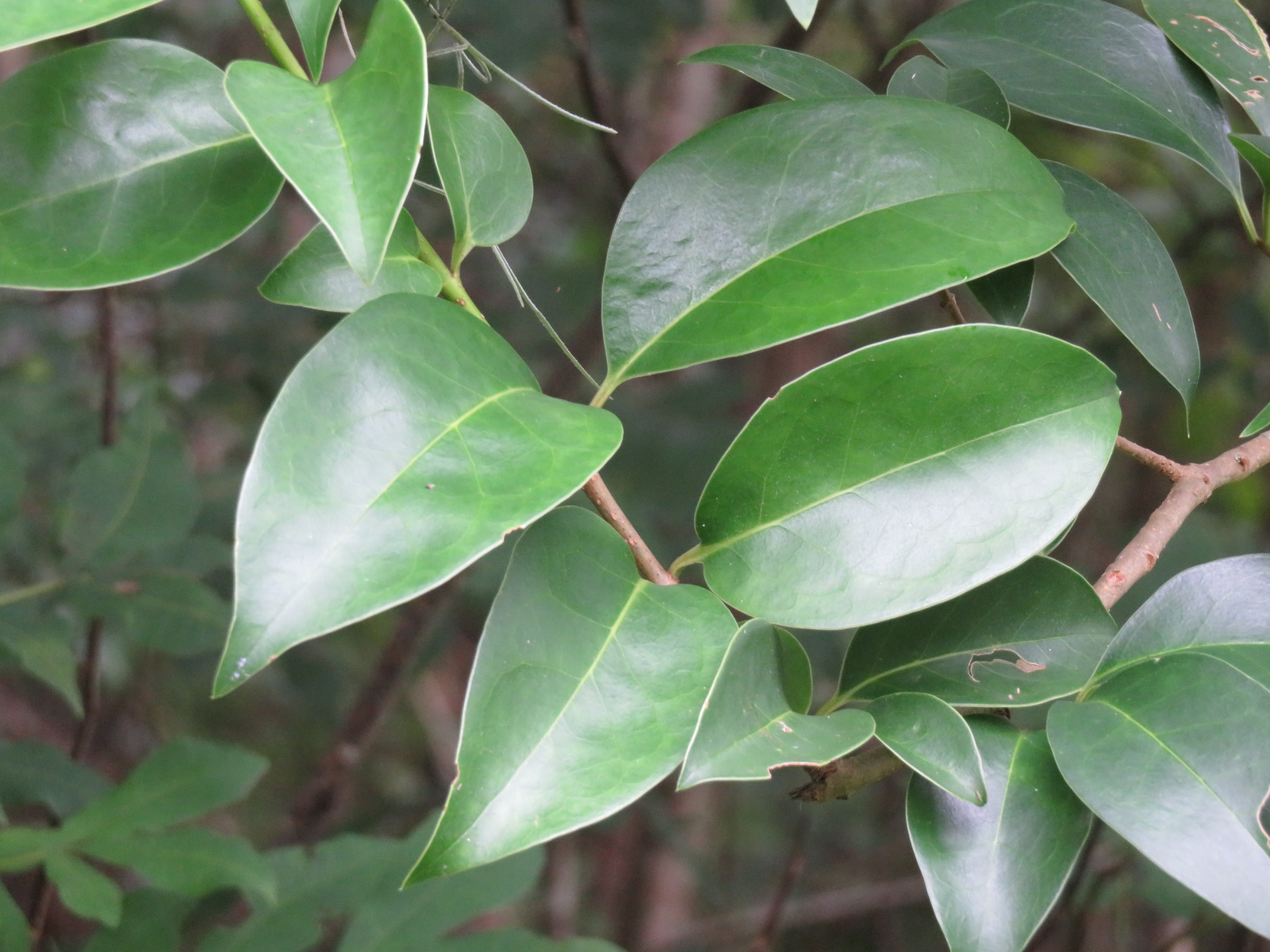 |
Japanese glossy privet - Ligustrum lucidum/japonicum); bird-introduced exotic
Are bird-introduced Oriental species which are locally common within the escarpment forest. As with the camphor tree, these thick-leaved Ligustrum
species were once planted as ornamentals throughout the Gulf Coastal region. |
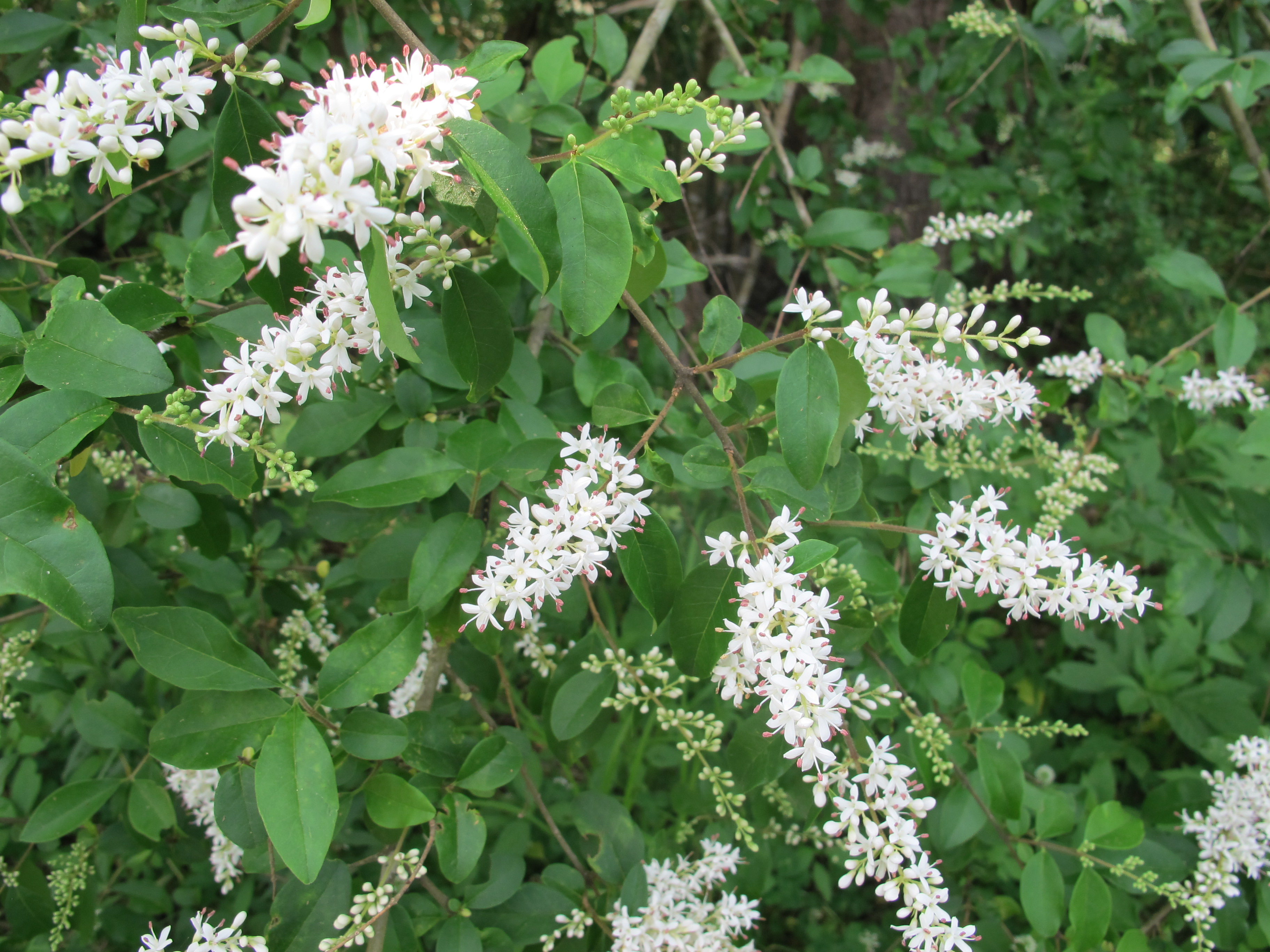
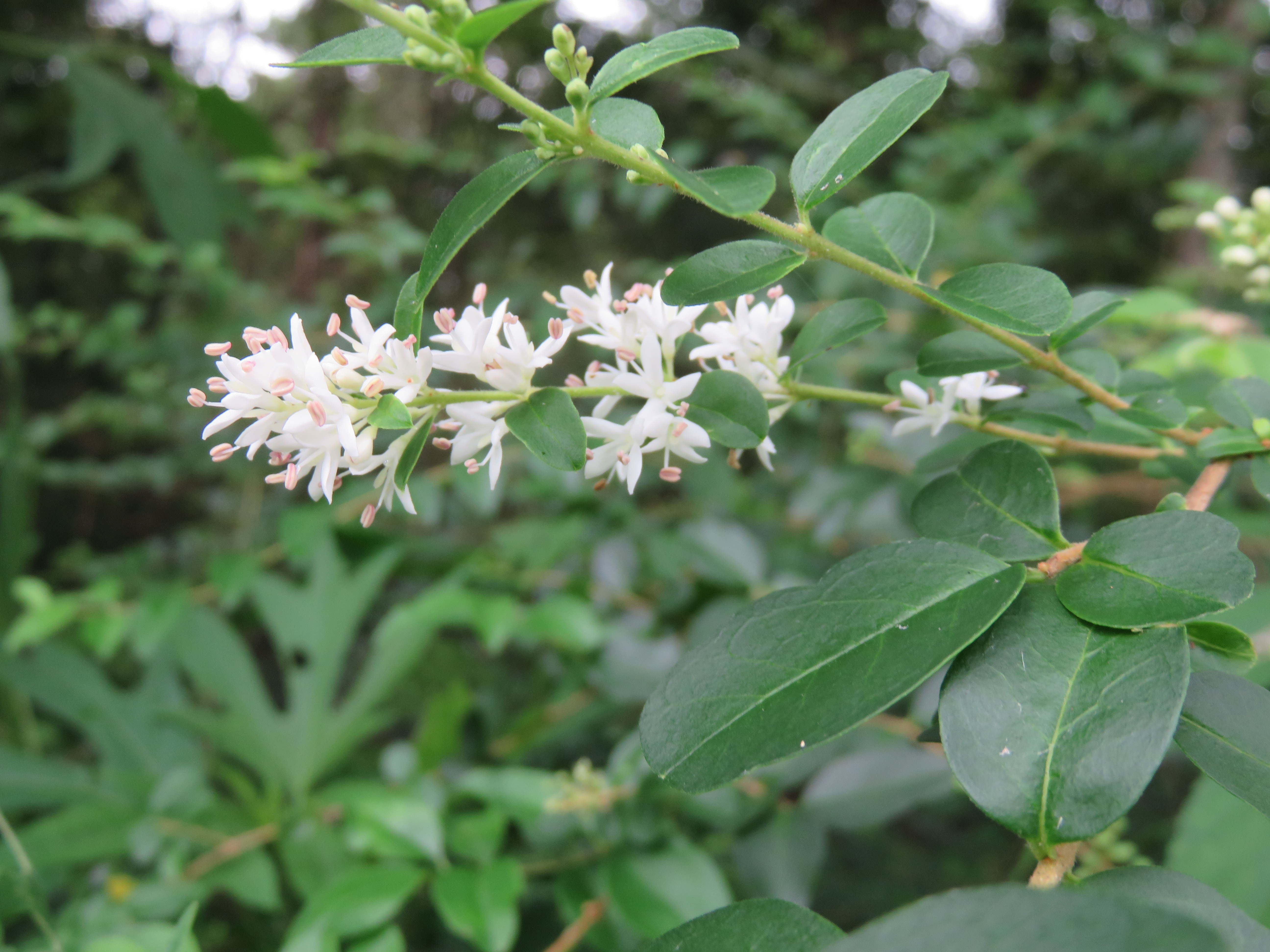 |
Chinese privet - Ligustrum sinense; bird-introduced exotic
Like Chinese Tallow (Sapium sebiferum), Chinese Privet is extremely abundant and widespread in distribution, often displacing native shrubs and
herbaceous plants in its wake. Its saving grace, though, is twofold: it produces juicy, apparently nutritious fruits for birds and mammals, and
it provides evergreen cover for animals during winter months. |
Family Platanaceae
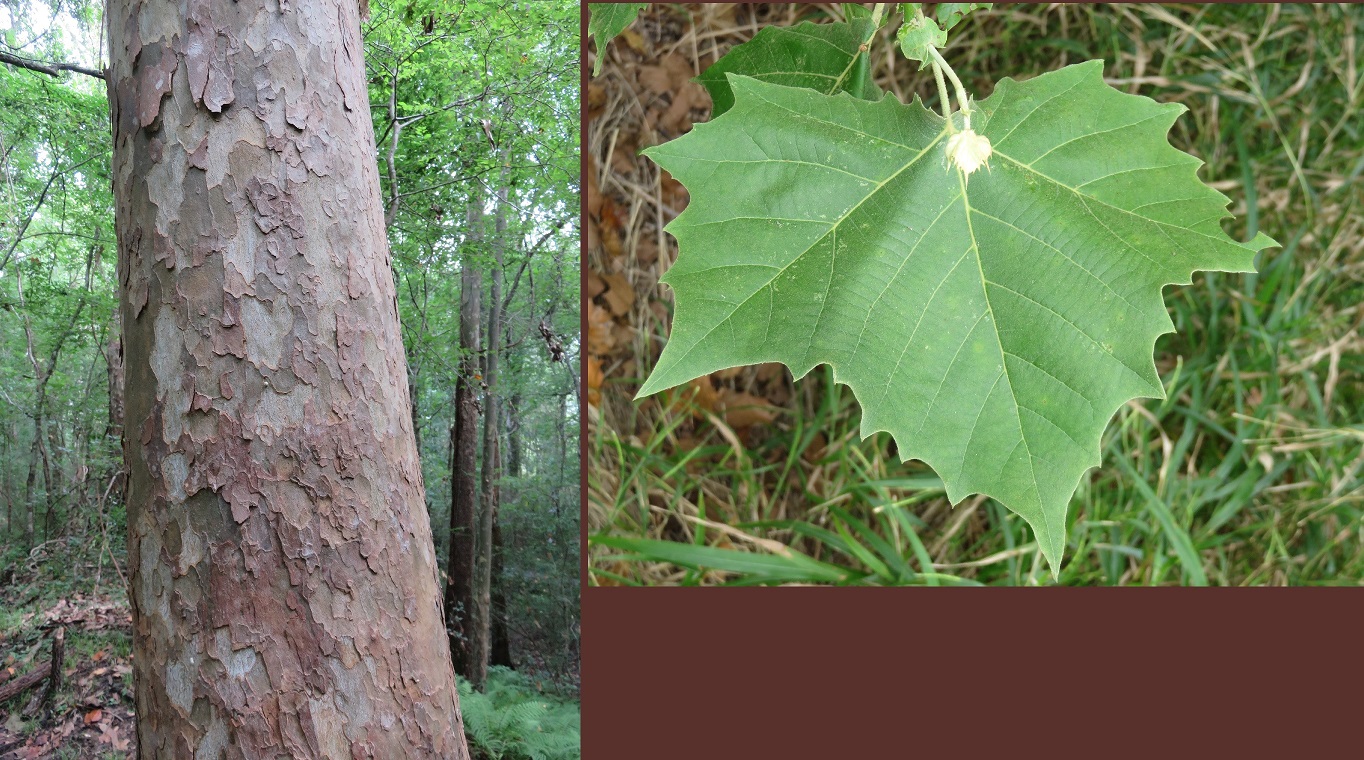
 |
American sycamore - Platanus occidentalis
A huge, climax-type denizen of the floodplain forest. As with water oak (Quercus nigra), American sycamore has a propensity to hollow out at fairly
young ages; thus providing valuable shelter for birds and mammals. Its small seeds are contained in spherical, modified cones - similar to those of
the sweet gum (Liquidambar styriciflua). |
Family Rosaceae
| |
Green hawthorn - Crataegus viridis
Quite common along woodland edges, fence lines, and hedgerows within the bottomland hardwood areas throughout southern Louisiana. It can be
identified by its small size (ca. 12-20'), thorny branches, and pale, exfoliating bark. As with all hawthorn species, green haw provides
valuable winter food for American Robins and other thrushes. |
| |
Carolina laurel-cherry - Prunus caroliniana
It is a dense shrub or small evergreen tree ranging from 15-36 ft. tall. The leaves are dark green, shiny, firm, smooth, and narrowly elliptic.
The leaves are poisonous when eaten. The flowers are white to cream and bloom from February to April. The fruit is fleshy and persistent through
winter and the birds eat the dry fruit. |
| |
Mexican plum - Prunus mexicana
It is a tree ranging from 15-35 ft. tall with fragrant white to pale pink flowers. The trunk turns blue-gray with dark horizontal striations as
they mature. The leaves are green, simple ovate. The purple plums ripen from July to September. The fruit can be consumed fresh and made into
preserves. Birds and mammals also eat the fruit. |
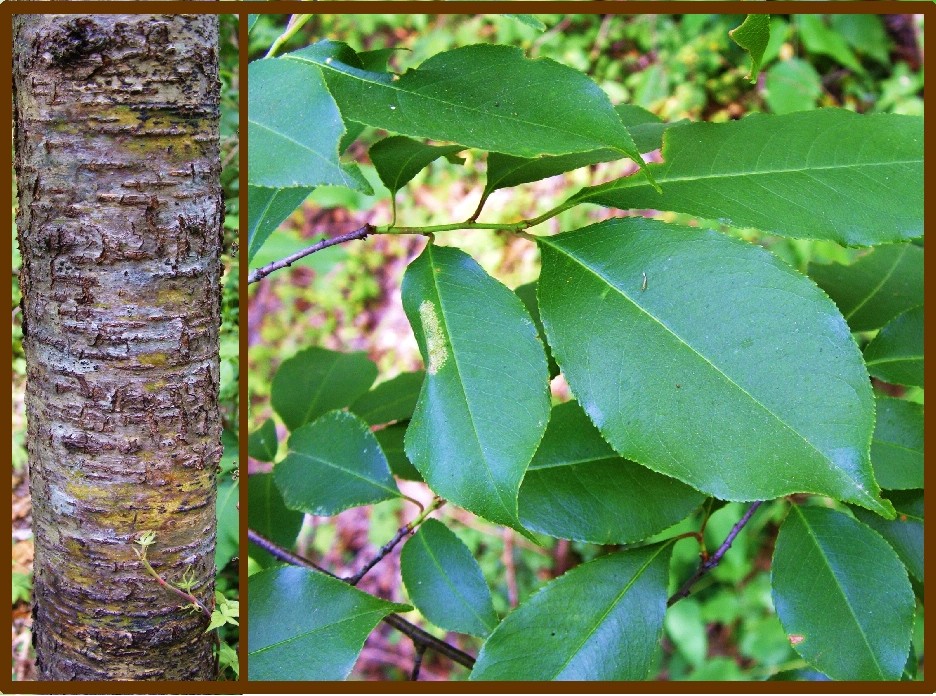
|
Black cherry - Prunus serotina
It is a deciduous woody tree that ranges from 25-110 feet tall. The leaves are shiny with an oblong blade and the bark is dark colored. The
flowers are white and the fruit is dark red. The fruit is used for making jam and cherry pies. The wood is used for furniture and other goods.
Although the fruit is edible, the rest of the plant contains amygdalin and can be toxic if consumed.
|
| |
Chickasaw rose - Rosa bracteata; bird-introduced exotic
It is a perennial evergreen that was introduced from Asia. It is a shrub growing up to 10 feet in height or length. The 1-3 inch leaves are
alternate and pinnately compound with toothed margins. The flowers are white with 5-petals and have yellow anthers in the center. The fruit
is red once ripened. It spreads by animal-dispersed seeds. It grows in disturbed areas and prefers clay enriched soil. It can spread in the
understories of forests. |

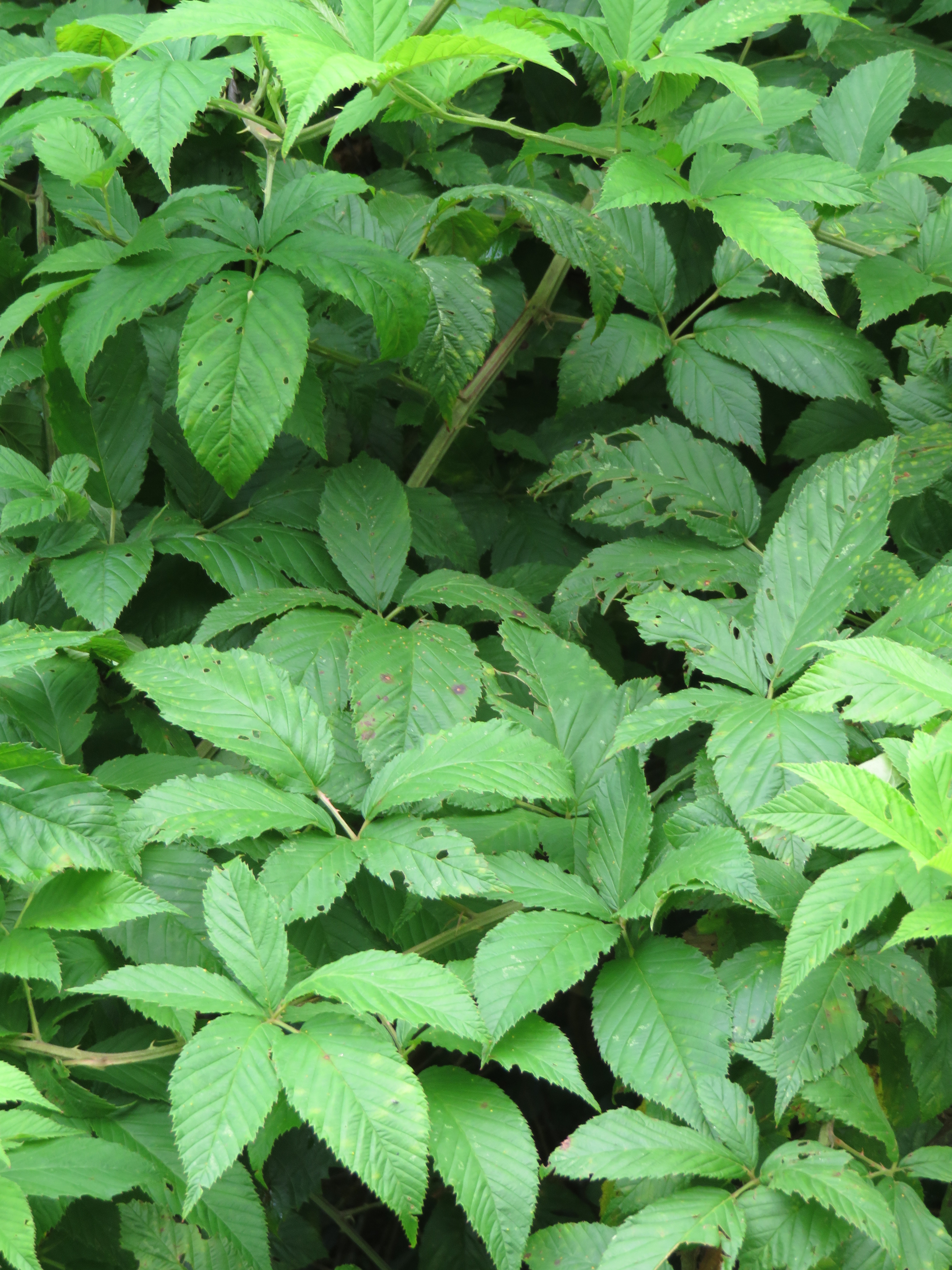
|
Blackberry - Rubus sp.; species undetermined
It is a perennial native shrub. The leaves are alternate palmately compound. The second year stems produce white flowers and red to black
fruit. It needs full or partial sun. The nectar and pollen of the flowers attract a variety of insects including wasps, bees, flies, butterflies,
and skippers. Blackberry thickets provide habitat for many songbirds and mammals. |
| |
Dewberry - Rubus sp.; species undetermined
It is a semi-evergreen vine that has palmately compound leaves. The flowers are white and bloom between March and April. The edible fruit looks
like a blackberry and produces in spring to early summer. The flowers and fruit attract insects, birds, and mammals. |
Family Rubiaceae
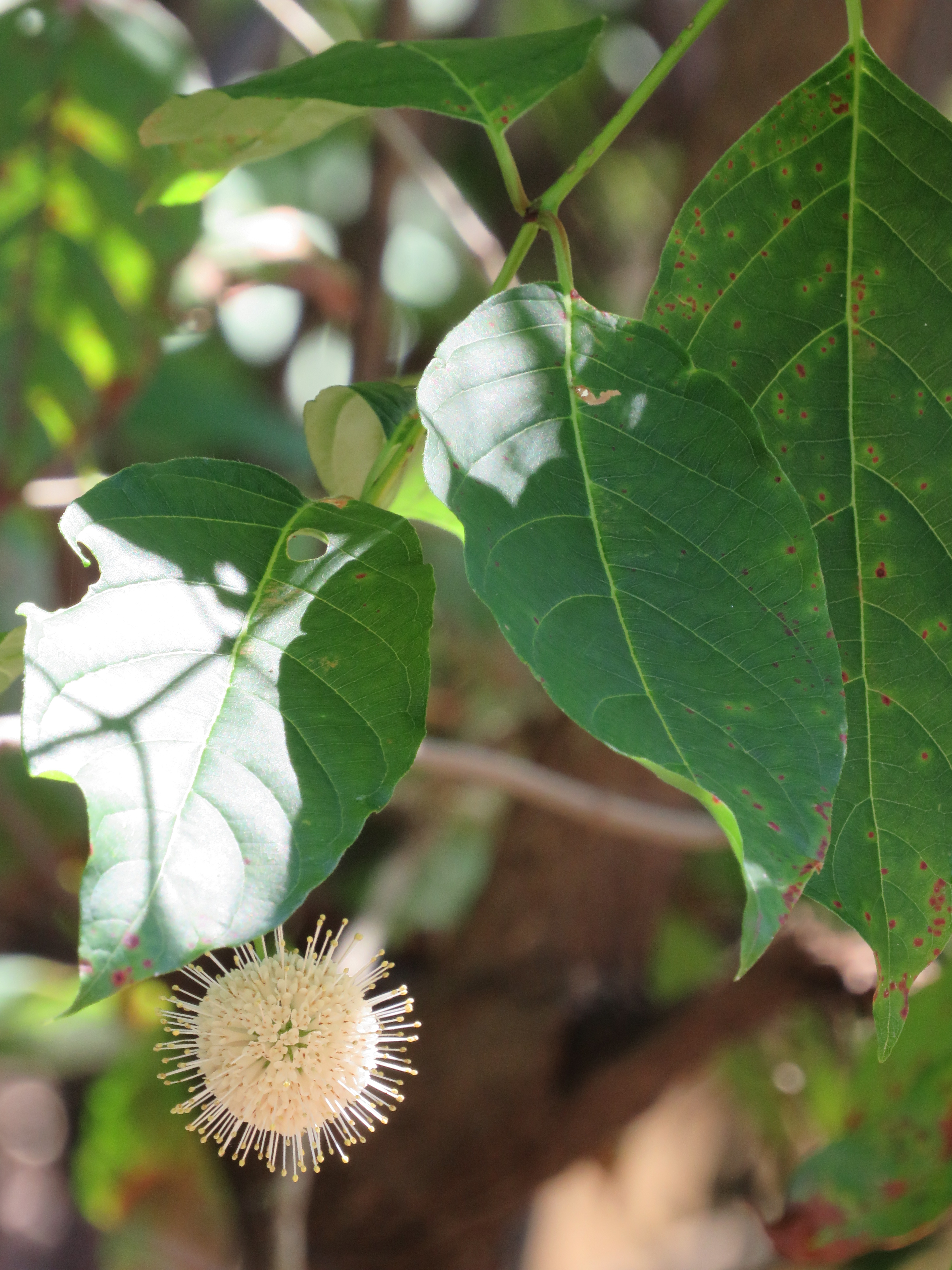
|
Button bush - Cephalanthus occidentalis
It is a native deciduous shrub that ranges from 5 to 12 feet in height. The leaves are ovate to elliptical and glossy bright green emerging in
spring. The flowers are white and fragrant and it blooms in June. It attracts butterflies and bees. It grows in moist soils in full sun to part
shade. Preferred habitat includes wet open areas, low woods, thickets, swamps, ponds, and river bottomland. |
Family Salicaceae
| |
Cottonwood — Populus deltoides
It is a large deciduous tree that grows 50–80 feet tall. It is native and grows along rivers, lowland areas, and swamps. Flowers bloom in early
spring before the leaves sprout. Male flowers are red and female flowers contain densely-tufted seeds with white hairs. Bark is ridged and dark
gray. The leaves are dark green, triangular, acuminate, and coarsely toothed. |
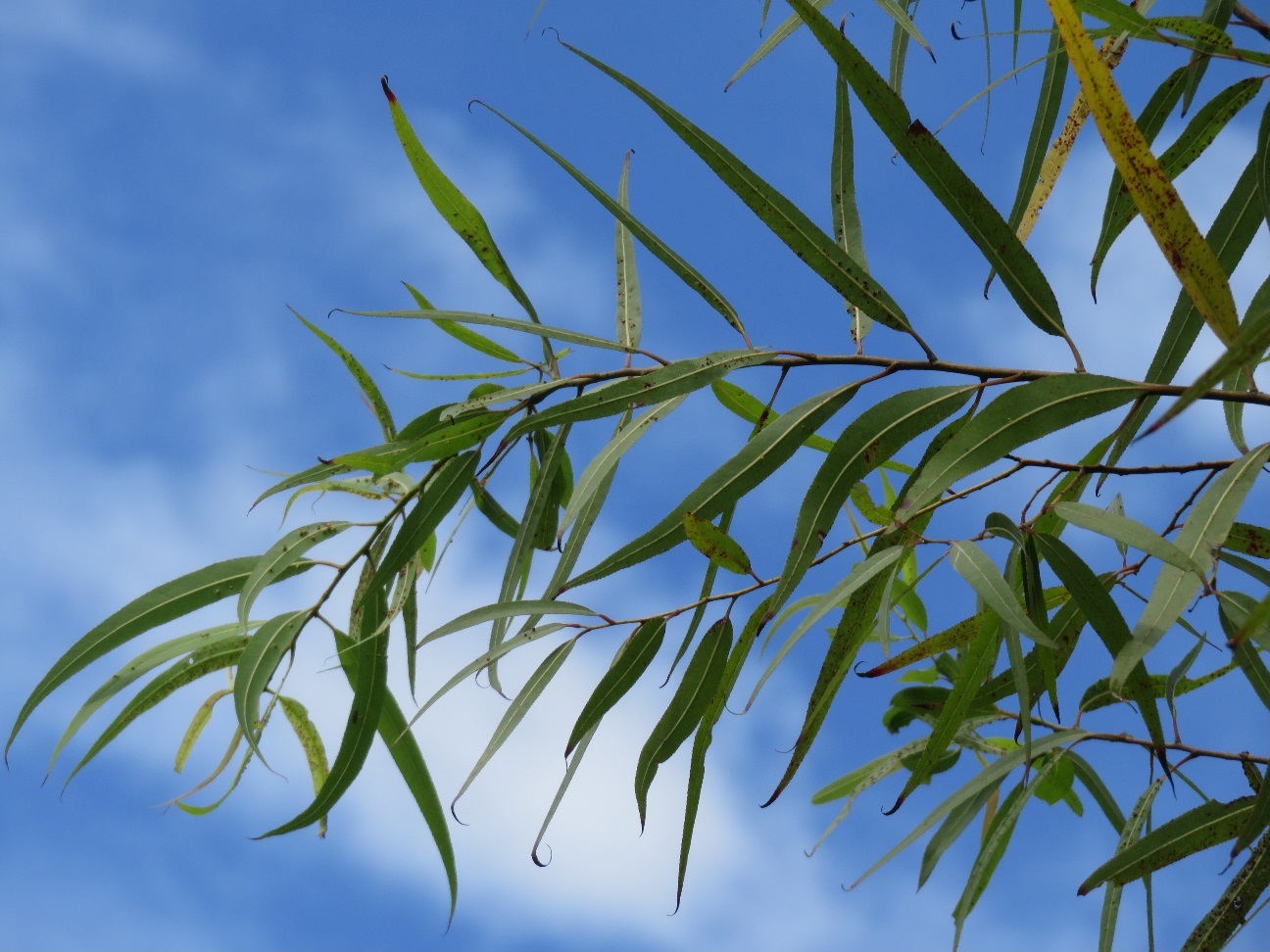
|
Black willow - Salix nigra
It is a small to medium-sized deciduous tree growing 30 to 90 feet in height. The leaves are simple, alternate, and lance shaped. The flowers
are small, yellow, and without petals. The bark is dark gray-brown. Preferred habitats are areas with moist soil usually along banks of streams
and in swamps. Honey bees are attracted to the nectar and pollen. It was used by Native American for treatment of fever, headache, and coughs. The
bark of the tree contains salicylic acid.
|
Family Styracaceae
| |
Two-winged silverbell — Halesia diptera; one individual, introduced; mode
undetermined
It is a small, deciduous tree or shrub reaching up to 20–30 feet in height. It has white bell-shaped flowers and blooms from April to May. The
fruit ripens in the fall. The dark green leaves are oval to obovate, and are irregularly toothed. It is native to the Gulf Coast region and grows
in wet areas including floodplains, stream banks, wet woods, and swampy areas. |
Family Ulmaceae
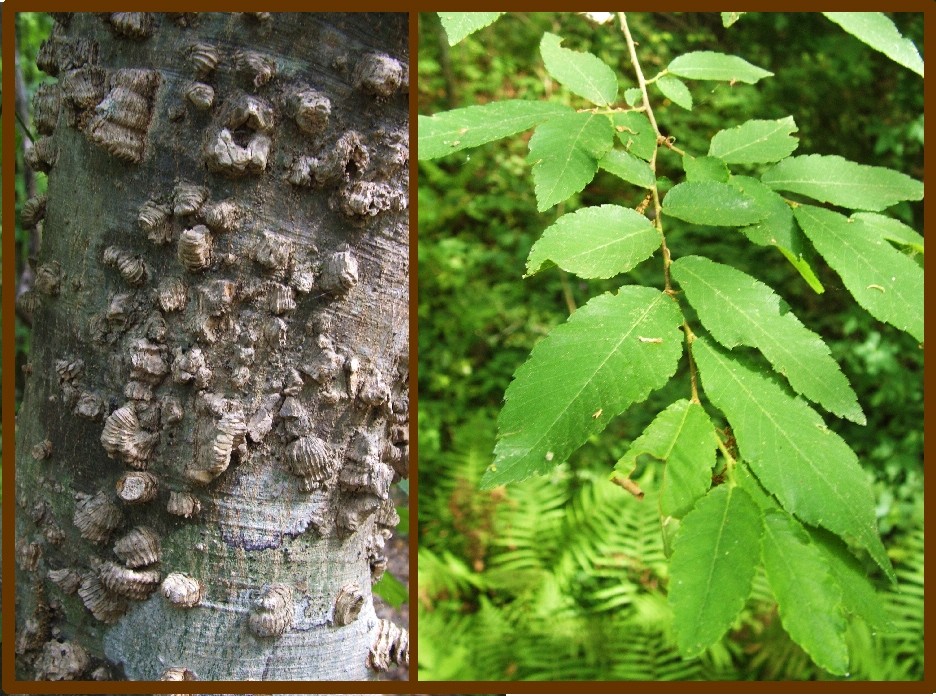
|
Hackberry (Sugarberry) - Celtis laevigata
It is a medium sized deciduous tree about 60–80 ft tall. It occurs in moist soils on floodplains. The leaves are alternate with an asymmetrical
base and taper to a long slender tip. The flowers are small yellow to orange-red clusters. The bark is light silvery gray and mostly smooth with
"warts.” The fruit is sweet and eaten by birds which in turn disperse the seeds. |
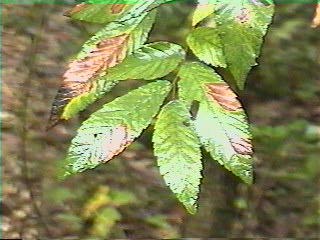
|
Water elm - Planera aquatica
It is a small, perennial, deciduous tree 30–50 feet tall, native to southeastern US. It is related to the elms but has a prickly nut instead
of a winged seed. It grows in wet soils. The leaves are alternate, simple, and ovate with a serrated margin. The flowers are very small with
fuzzy stigmas and appear in early spring. The bark is scaly and grayish brown. |
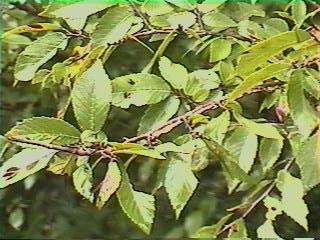
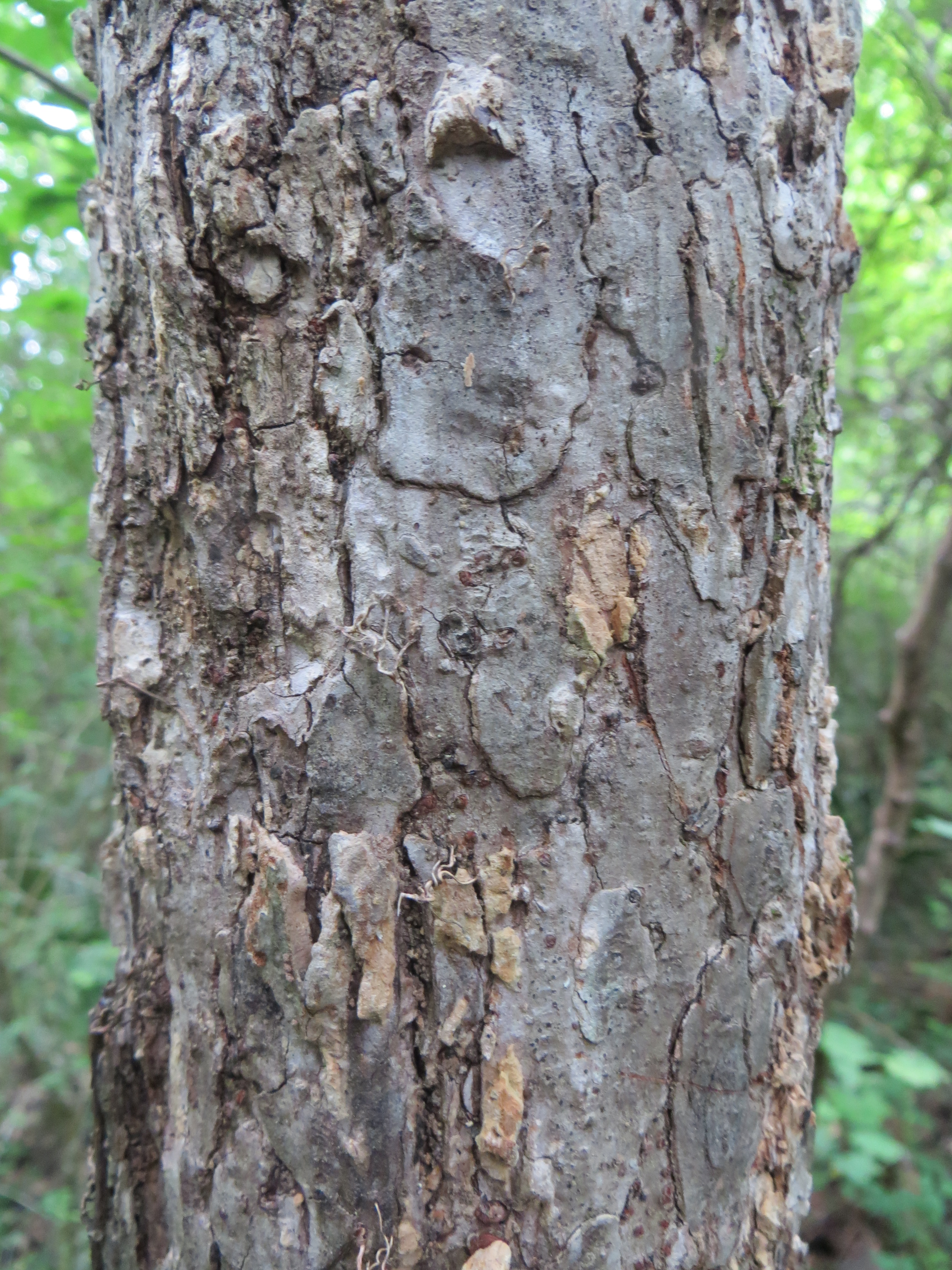
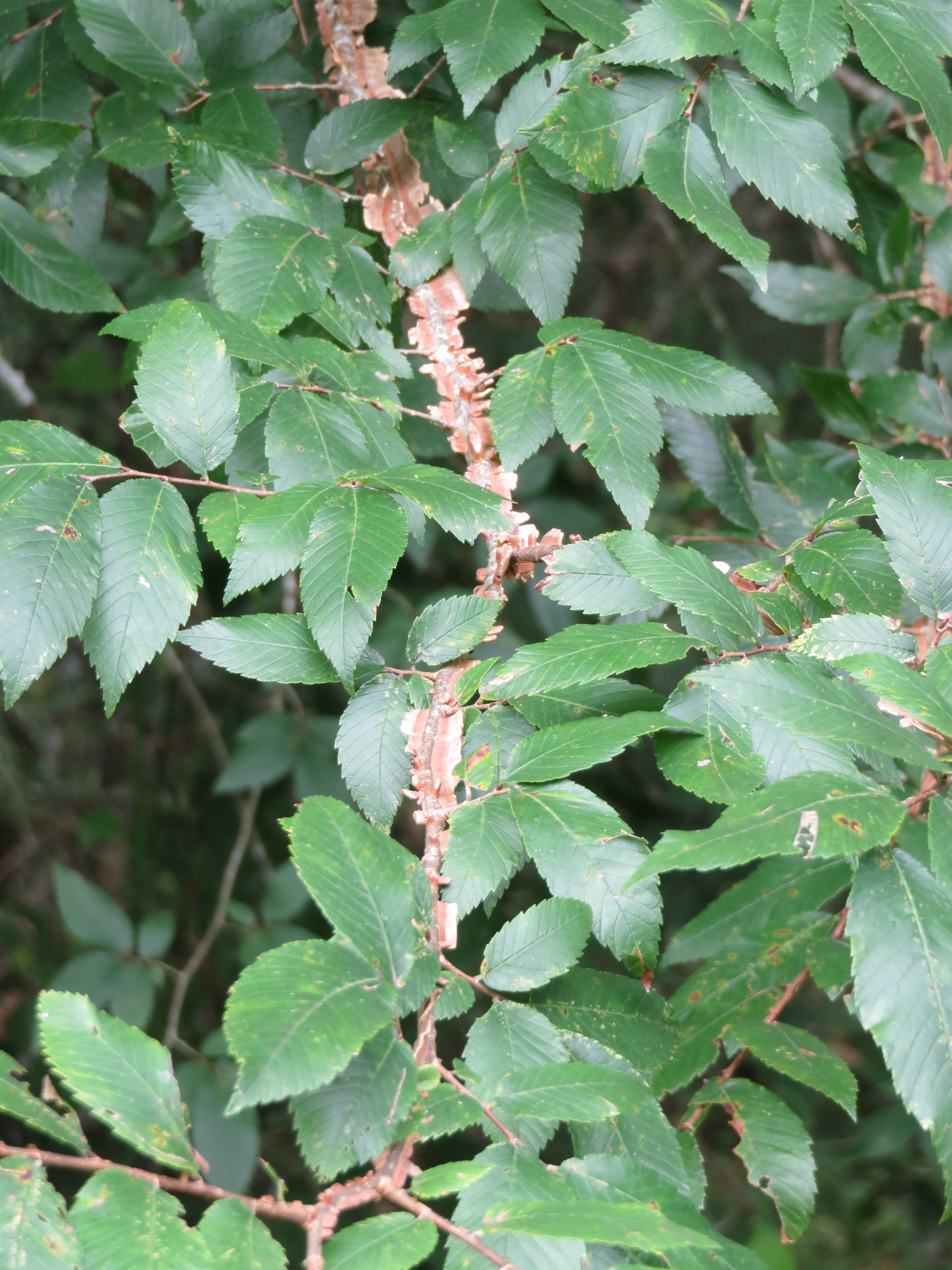
|
Winged elm - Ulmus alata
It is a small to medium tree found in southeastern US. The leaves are alternate, simple, and narrowly ovate. The flowers are small, reddish, and
bloom in March to April. The fruit appears from April to May. The bark is red-brown to gray with flat-topped ridges. |
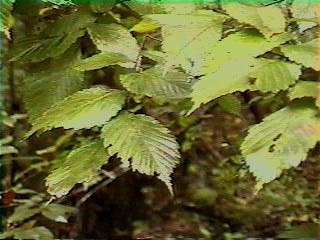
|
American Elm - Ulmus americana
It is a deciduous tree growing up to 100ft tall. The leaves are alternate, simple, and ovate to oblong. The flowers are small, purple-brown, and
occur in drooping clusters and bloom in early spring. The fruit are wafer-like samaras and ripen in spring. The bark is dark gray with flat-topped
ridges and diamond fissures. |
Family Verbenaceae
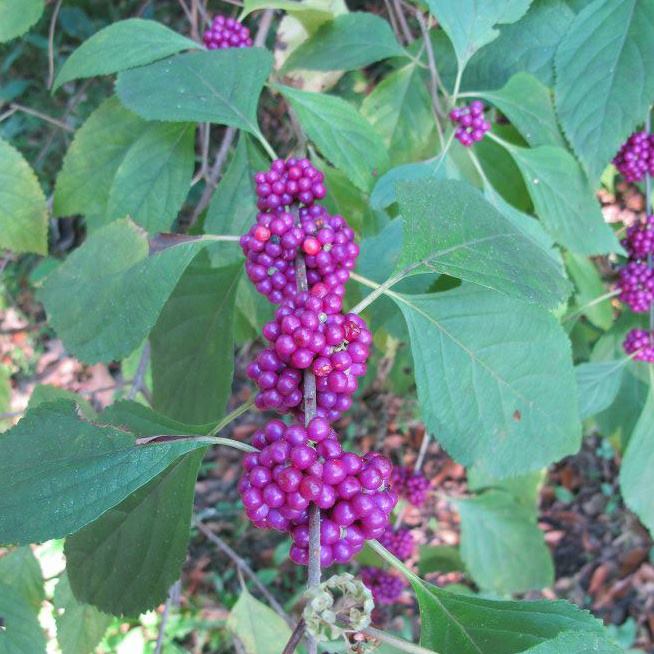

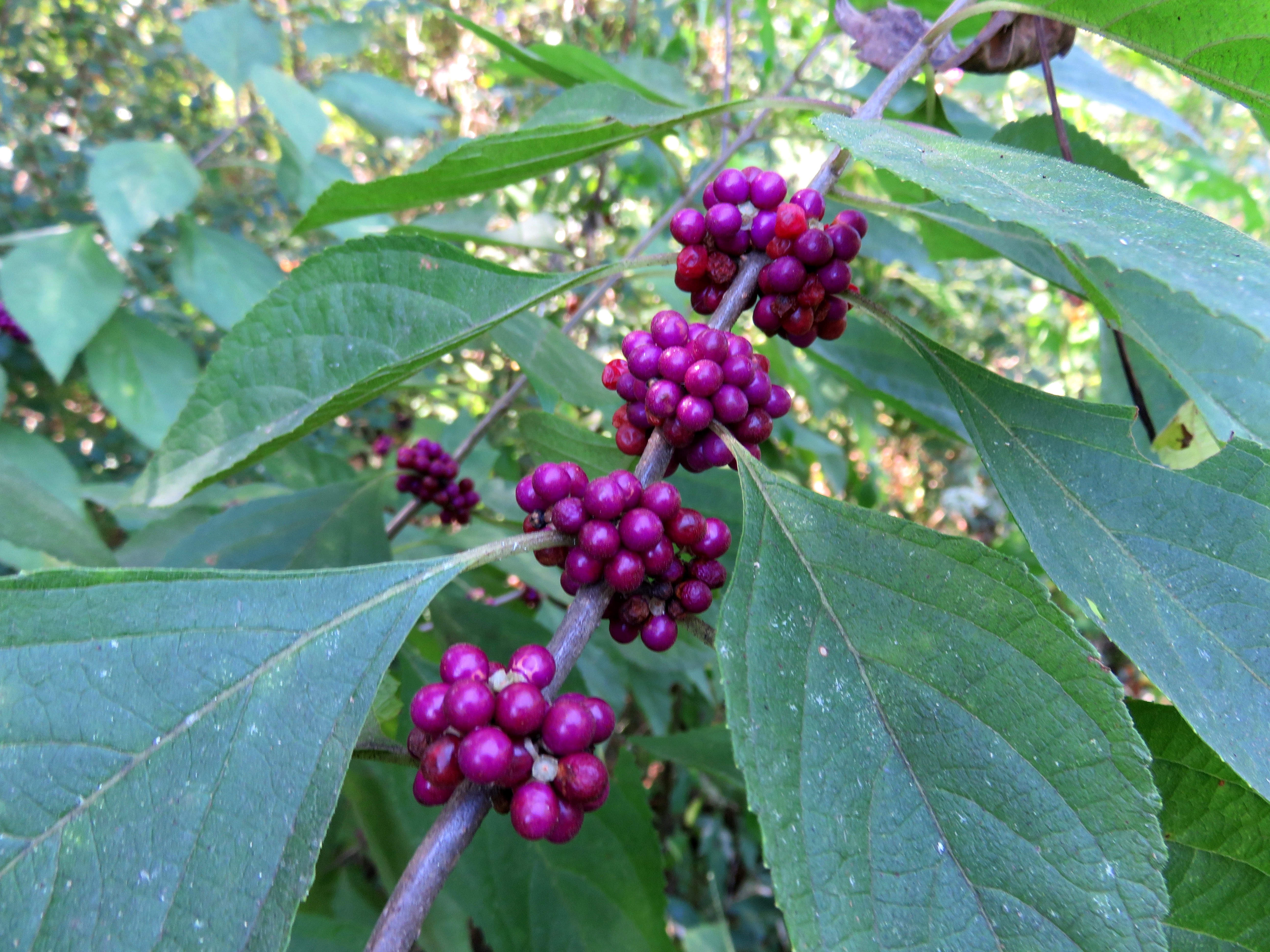
|
American Beautyberry — Callicarpa americana; aka "French Mulberry"
It is a native shrub and grows 3–9 ft. tall. The branches are long and the leaves are yellow-green in the fall. It produces clusters of glossy, purple
fruit in the fall and winter. The bark is light or reddish brown, smooth, with raised corky lenticels. The leaves occur in pairs or in threes, ovate to
elliptic, and pointed or blunt at the tip. Flowers are in dense clusters and are small and pink. The fruit is pink or purple, berrylike, and remain after
the leaves have fallen. The seeds and berries are eaten by birds and deer. |
PAGE 1
To see more photos, view our Facebook page.